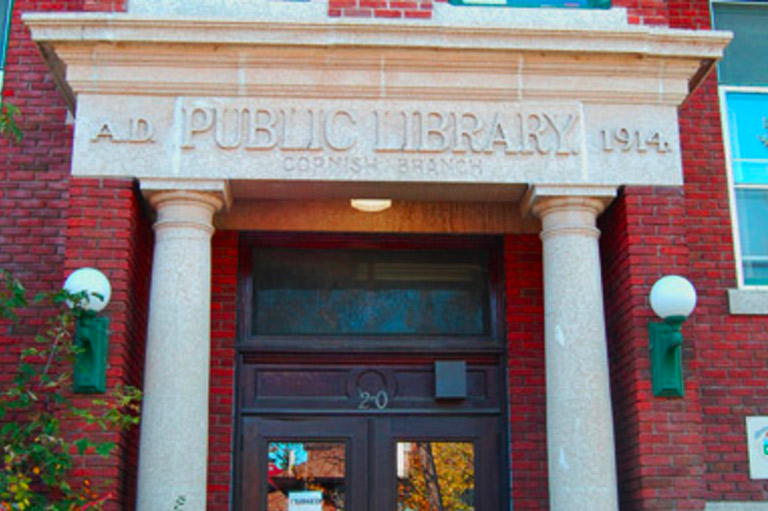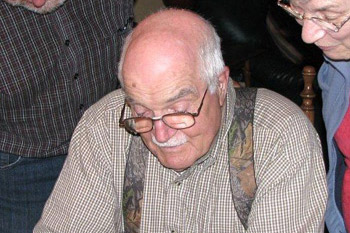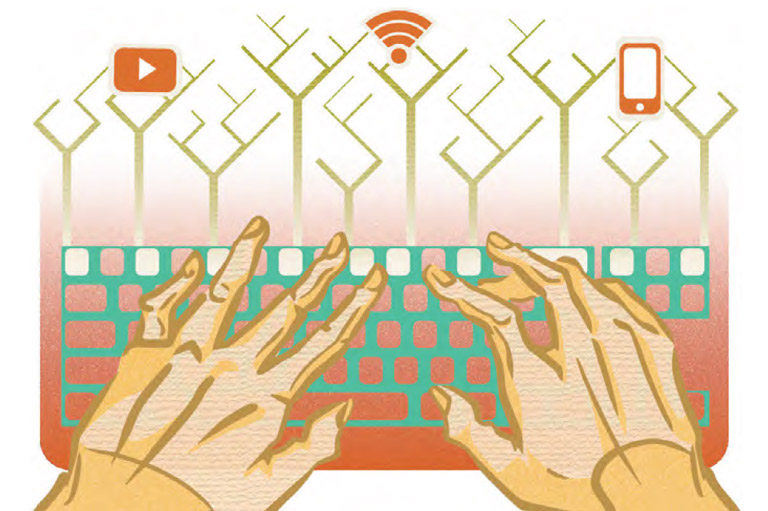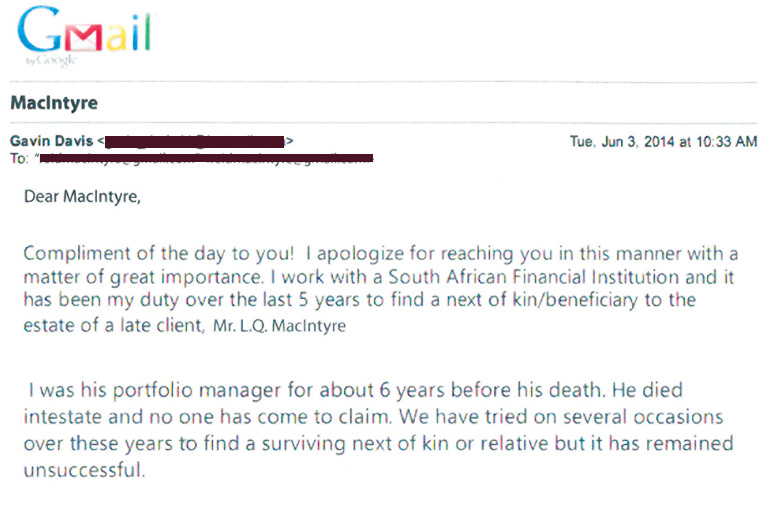Roots: Baptizing the Dead
As we discussed in the previous issue, the typical Canadian associates Mormonism with polygamy, preternaturally polite Utahans, and clandestine baptisms of dead popes. And, oh yeah, they do genealogy.
So why do Mormons engage in genealogy? In my article “On a Mission,” I described the unmatched contributions of Mormonism to the field. We also explored the doctrine of “continuing revelation” that allows leaders of The Church of Jesus Christ of Latter-day Saints (the LDS Church) to adjust or even reverse doctrine — for instance, the 1890 banning of polygamy, which had previously been encouraged.
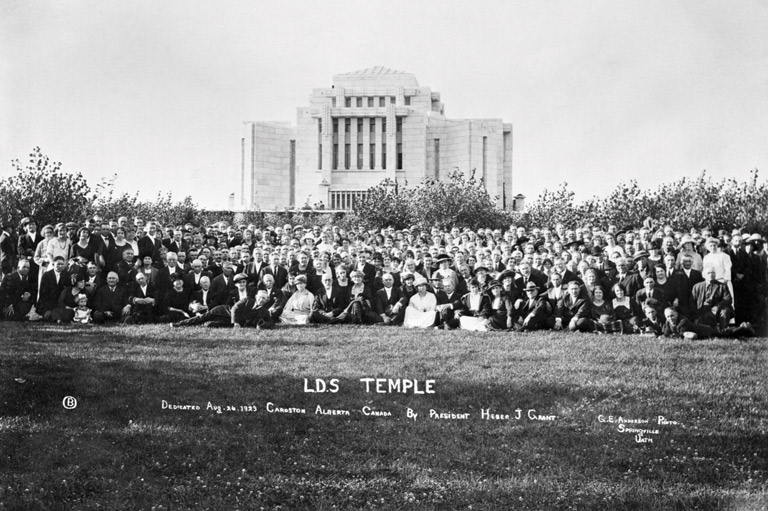
Advertisement
Some revelations have been an unalloyed success from the get-go. Consistent with his view that he was restoring, not reforming, Christianity, Joseph Smith, the founder of Mormonism, championed what he took to be the documented Biblical practice of baptism in death and reconfigured it as proxy, or vicarious, baptism.
Why should someone be denied Heaven for all eternity, his argument went, because he or she was not so fortunate as to be baptized in life?
In 1840, addressing the funeral of an unbaptized Mormon convert, Smith spoke of the desirability of baptizing the departed through a proxy. He also assured a woman in the crowd that her recently deceased unbaptized son could indeed receive the sacrament, clearing the way for parent and child to enjoy the eternal hereafter “sealed” together.
In an era when life expectancy was much less than today, the Mormon “ordinances” of proxy baptism of the dead and “sealing” family relationships in eternity seemed a literal godsend to the bereaved and became powerful tools in attracting converts to the faith.
Mormonism promised an irrepressibly upbeat American take on religion at a time when the country was ascending to world leadership in so many other fields. Soon the dead were being baptized by the boatload, and the process continues to this day with earnest Mormon teens often serving as the proxies.
Yet, for the ordinances to work as intended, it was essential to unambiguously identify who had to be baptized and who should be sealed to whom. The priesthood needed names, family relationships, dates. And it couldn’t afford mistakes.
Who wants to spend eternity “sealed” to the wrong set of relatives because of slapdash work at the temple?
In short, Mormons required accurate family trees, the production of which would in turn depend on the ready availability of records that had hitherto been accessible to only the most persistent and well-travelled researchers.
Hence LDS Church president Wilford Woodruff — who had outlawed polygamy four years earlier — made two important proclamations in 1894. First, he announced a revelation obliging Mormons to perform temple ordinances on their ancestors. Then, he inaugurated the Genealogical Society of Utah, thereby kick-starting Mormonism’s unstinting efforts to acquire copies of the entire world’s genealogically relevant documents.
What many did not recognize was that proxy baptism wasn’t confined to Mormon relatives and ancestors. Woodruff envisioned that ordinances could also be performed on documented non-Mormons and that they would have the option to accept or reject the offer from beyond the grave. Death would no longer be a barrier to Mormon evangelism.
So there was no free lunch — or, at least, no free genealogy — for non-Mormons. As the contents of LDS databases have become more transparent in the Internet era, the extent and inappropriateness of the proxy baptism program have become clear:
- Catholics were outraged to find that all the popes had been baptized in death; accordingly, since 2008, the Vatican has forbidden local dioceses to share their records with the LDS Church.
- Jews were similarly appalled to learn that hundreds of thousands of Holocaust victims had been given the treatment — Anne Frank no fewer than nine times, in what we might think of as spam for the spirit world.
- During the last U.S. presidential election, Mitt Romney, a devout Mormon, was heavily criticized in some quarters for never fully disclosing his precise role in the proxy baptism of his atheist father-in-law.
In response to the worst excesses, the LDS Church brass has apologized repeatedly, removed inappropriate names from their databases of ordinances, and issued increasingly firm policies limiting proxy baptisms to the families and ancestors of LDS members.
That’s the easy part. Policing the activities of fifteen million Mormons is proving a challenge, and new transgressions keep being discovered, often outside the U.S., that deplete what little goodwill still remains between the LDS Church and offended parties.
Many find it hard to square this behaviour with their perception of the almost universal likeability of Mormons, so memorably portrayed in the multi-Tony Award-winning Broadway hit The Book of Mormon.
Some ascribe this legendary niceness to the success of strong families in instilling positive traits in their children. Others more cynically say Mormon missionary training deliberately fosters an optimistic, trustworthy demeanour as an aid to evangelism. In fact the two explanations are complementary, not contradictory.
Perhaps more than any other aspect of Mormonism, the pursuit of genealogy captures the uneasy relationship between the LDS Church and the outside world. Church ordinances, conceived with the profoundly touching goal of unifying families in death, have resulted, a century and a half later, in the enrichment of humanity through the creation of what is arguably the world’s most extensive archive dedicated to a single topic, the Family History Library.
Yet at the same time these practices have led the LDS Church into fundamental conflict with two of the world’s most influential faiths while giving the impression in some quarters that it hasn’t tried nearly hard enough to discipline its rogue elements.
Genealogists have a vested interest in seeing these conflicts resolved.
Around the world each year, too many irreplaceable documents are destroyed by fire, flood, mould, or human stupidity. Those who forbid the LDS Church from filming their records rarely put in place a digitization program of comparable ambition, so losses are permanent, a tragedy for all.
Unfortunately, the interests of genealogists — and the future of a pile of crumbling documents — seem to count for little in the high-stakes world of priestly realpolitik, or in the holier-than-thou hideaways of Mormon renegades.
Maybe prayer is the answer.
Themes associated with this article
Advertisement
You might also like...

Canada’s History Archive, featuring The Beaver, is now available for your browsing and searching pleasure!

